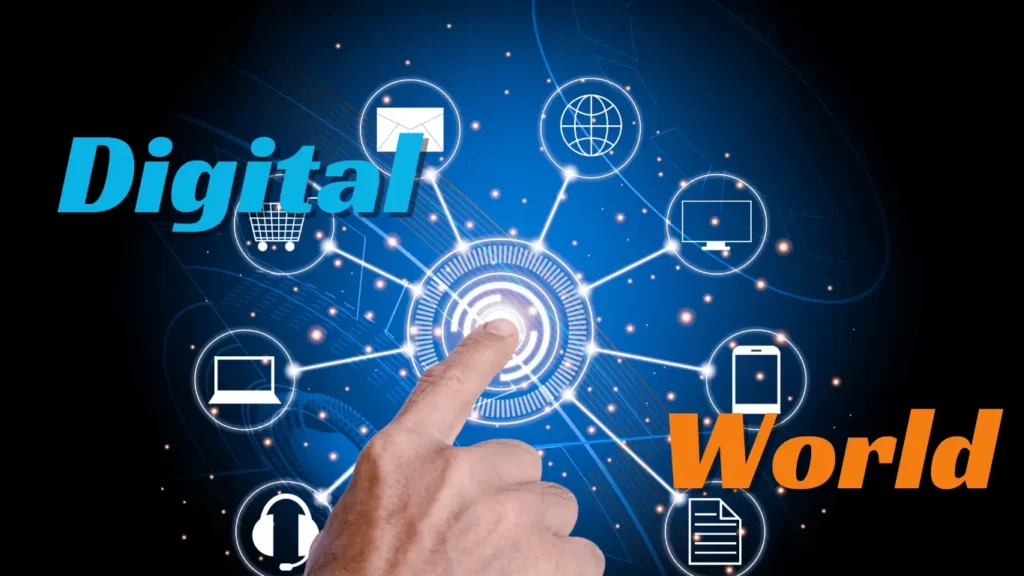
Explore the game-changing technologies that transform the digital world in 2024. This year marks a crucial moment for tech, introducing groundbreaking tech trends that will impact businesses and communities.
From advanced AI to quantum computing and 6G connectivity to eco-friendly tech, these developments bring both new possibilities and challenges.
In this article, we’ll discuss the 10 New Technologies in 2024. Get ready for the latest innovation, growth, and transformation in the tech field, influencing how we live and work.
Table of Contents
The List Of 10 New Technologies In 2024
1. 6G Technology
6G technology represents the upcoming evolution in wireless communication, poised to deliver swiffer speeds, reduced latency, enhanced capacity, and heightened reliability compared to its predecessor, 5G.
Beyond improved performance, 6G is set to unlock novel applications like holographic communication, immersive virtual reality, and pervasive artificial intelligence services.
This next generation of connectivity is anticipated to revolutionize the digital landscape by fostering unprecedented levels of connectivity and technological possibilities.
2. Quantum computing
Quantum computing harnesses quantum mechanics to tackle computations beyond classical computers’ capabilities. It operates with qubits, which can exist in two states simultaneously through superposition.
Additionally, entanglement enables qubits to influence each other over distances. This technology represents a leap forward in computing by leveraging these quantum phenomena for more powerful and complex calculations.
Read Also: How To Use Wolfram ChatGPT Plugin
3. AI and GenAI
Artificial Intelligence (AI) constitutes a realm within computer science dedicated to crafting machines capable of emulating human intelligence, encompassing skills like reasoning, learning, and decision-making.
Within this domain, Generative AI emerges as a specific subset, proficient in generating fresh content, including text, images, music, or code. Leveraging either existing data or user input as its foundational elements.
4. Smart Devices
Smart devices refer to electronic gadgets capable of wireless connectivity through protocols like Bluetooth, Wi-Fi, or 5G. They function interactively and autonomously, collecting, processing, and exchanging data.
These devices are equipped to respond to user commands and adapt to environmental changes. In essence, they embody a connected ecosystem, fostering seamless communication and providing users with enhanced control and convenience.
Read Also: What Is DLC In Gaming? Everything You Need To Understand
5. Datafication
Datafication involves converting analog information into digital form, facilitating storage, analysis, and utilization across diverse domains like social interactions, personal behaviors, physical environments, and business processes.
This transformative process unveils novel insights and opportunities while simultaneously introducing challenges such as privacy, security, and ethical considerations.
By digitizing non-digital data, datafication opens avenues for innovation and comprehension, yet necessitates vigilant handling to address the complexities associated with information security and ethical implications.
6. Security and Trust
Ensuring the security and trustworthiness of systems or services is crucial when dealing with data, information, or communication.
Security involves safeguarding against unauthorized access, use, modification, or disclosure, while trust pertains to users’ confidence in the reliability, integrity, and authenticity of data and systems.
Achieving security and trust relies on employing methods like encryption, authentication, authorization, auditing, and compliance.
Read Also: How To Use AI News Roundup ChatGPT Plugin
7. 3D Technology
3D technology encompasses methods for generating or showcasing three-dimensional visuals, fostering a sense of depth and lifelike perception. Its applications span diverse domains:
3D printing transforms digital models into tangible objects, while 3D scanning captures real-world object characteristics. In the digital world, 3D modeling facilitates the design and manipulation of virtual objects.
Additionally, 3D visualization brings these creations to life through rendering and display. 3D technology offers a versatile toolkit for creating, transforming, and presenting objects and scenes across various industries.
8. Geonomics
Geonomics combines genomics (the study of an organism’s genes) with geography. It explores how genes influence the diversity, evolution, adaptation, and distribution of species in different regions.
By applying genomics to geography, researchers can better understand the genetic aspects of organisms and how they relate to their physical surroundings on Earth.
This field, known as Geonomics, sheds light on the interplay between genes and the environment, providing insights into the intricate connection between genetics and geographical factors.
9. Robotic Process Automation (RPA)
Robotic Process Automation (RPA) is a type of software that automates repetitive tasks usually done by people. It mimics human actions like clicking, typing, copying, and interacting with different computer programs.
RPA helps make things faster, more accurate, and less costly by reducing errors and the amount of work people have to do. It’s like having a virtual assistant to handle routine jobs, boosting efficiency and productivity while ensuring compliance.
Read Also: How To Use Image Editor ChatGPT Plugin
10. Extended reality (XR)
Extended Reality (XR) serves as a comprehensive category encompassing technologies that modify reality by integrating digital components into the physical environment.
This overarching classification features Virtual Reality (VR), immersing users in computer-generated environments; Augmented Reality (AR), overlaying virtual content onto the real world; and Mixed Reality (MR), seamlessly blending elements of both VR and AR.
XR transforms our perception of reality by seamlessly merging the tangible and digital realms, providing users with diverse and dynamic experiences that transcend traditional boundaries.
Conclusion
So these were some new technologies of 2024. As you know, the world is progressing fast, and many types of inventions and technological developments are taking place.
Meanwhile, it is essential for us to stay updated with these technological developments. We continuously provide tech-related updates for you here. Please show your support and share it with others.







